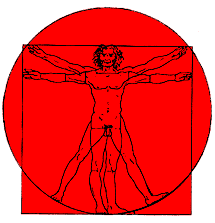|
The Real Da Vinci Code
Mary and Jesus
Mary and Jesus are thought to have lived over 2000 years ago in Bethlehem, Palestine, during the reign of the Roman Emperor Augustus.
Although Mary Magdalene makes her appearance in the Biblical Gospels, she has always been something of a minor player. Her claim to fame, as it were, is that she was the first person to see Jesus after his resurrection. Although she is not explicitly described as a whore in the Bible, most people are taught that that's what she was. But the Gnostic Gospels tell a different story.
In 1945, a peasant farmer in Nag Hammadi, on the west bank of the River Nile, discovered a collection of 13 ancient manuscripts containing Gnostic scriptures and commentaries. They are thought to have been written in the 2nd and 3rd centuries, although the actual manuscripts are copies made in the 4th century.
The list of accepted books of the New Testament was drawn up in 367AD, at which time there were more than 20. But numbers were gradually whittled down thereafter to leave the four that we know today. The Gnostic Gospels discovered at Nag Hammadi are copies of some of those discarded books. Amongst them is the Gospel of Mary Magdalene.
The gospel describes a woman who is certainly not a whore, but who sits at the right hand of Jesus. Although the couple are described as being very close, there is no mention of a marriage between them, nor of any children. Of course, a marriage between Mary and Jesus, which is certainly possible, would have made Mary heir and so true Leader of the Christian faith, following the death of her husband.
It
seems suspicious that the Church should go to such lengths to mar the name of a woman who was clearly an important disciple of Jesus. Whether it was simply that a male dominated church couldn't bear the presence of women amongst them, or whether
the Church feared Mary as its rightful guardian remains a moot point. The Holy Grail | The Priory of Sion | The Knights Templar | Mary and Jesus | Leonardo da Vinci | Opus Dei | Find out more
|
